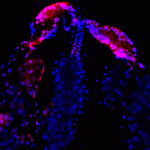Link to Pubmed [PMID] – 25077992
Infect. Genet. Evol. 2014 Dec;28:681-90
Arthropod-borne viruses (arboviruses) are mainly transmitted horizontally among vertebrate hosts by blood-feeding invertebrate vectors, but can also be transmitted vertically in the vector from an infected female to its offspring. Vertical transmission (VT) is considered a possible mechanism for the persistence of arboviruses during periods unfavorable for horizontal transmission, but the extent and epidemiological significance of this phenomenon have remained controversial. To help resolve this question, we reviewed over a century of published literature on VT to analyze historical trends of scientific investigations on experimental and natural occurrence of VT in mosquitoes. Our synthesis highlights the influence of major events of public health significance in arbovirology on the number of VT publications. Epidemiological landmarks such as emergence events have significantly stimulated VT research. Our analysis also reveals the association between the evolution of virological assays and the probability of VT detection. Increased sensitivity and higher-throughput of modern laboratory assays resulted in enhanced VT detection. In general, VT contribution to arbovirus persistence is likely modest because vertically infected mosquitoes are rarely observed in nature. Taken together, however, our results call for caution when interpreting VT studies because their conclusions are context- and method-dependent.

